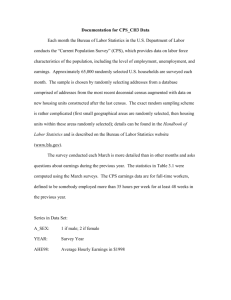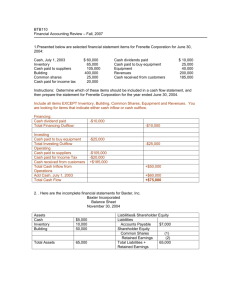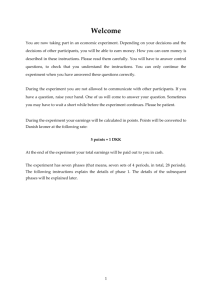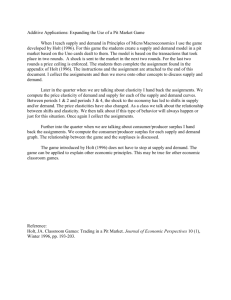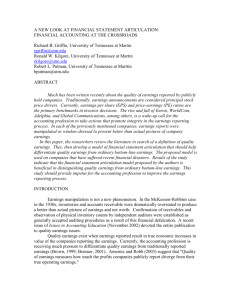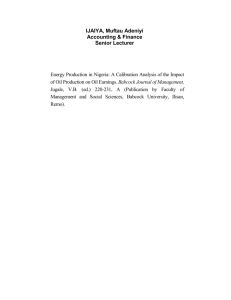Experimental Instructions
advertisement
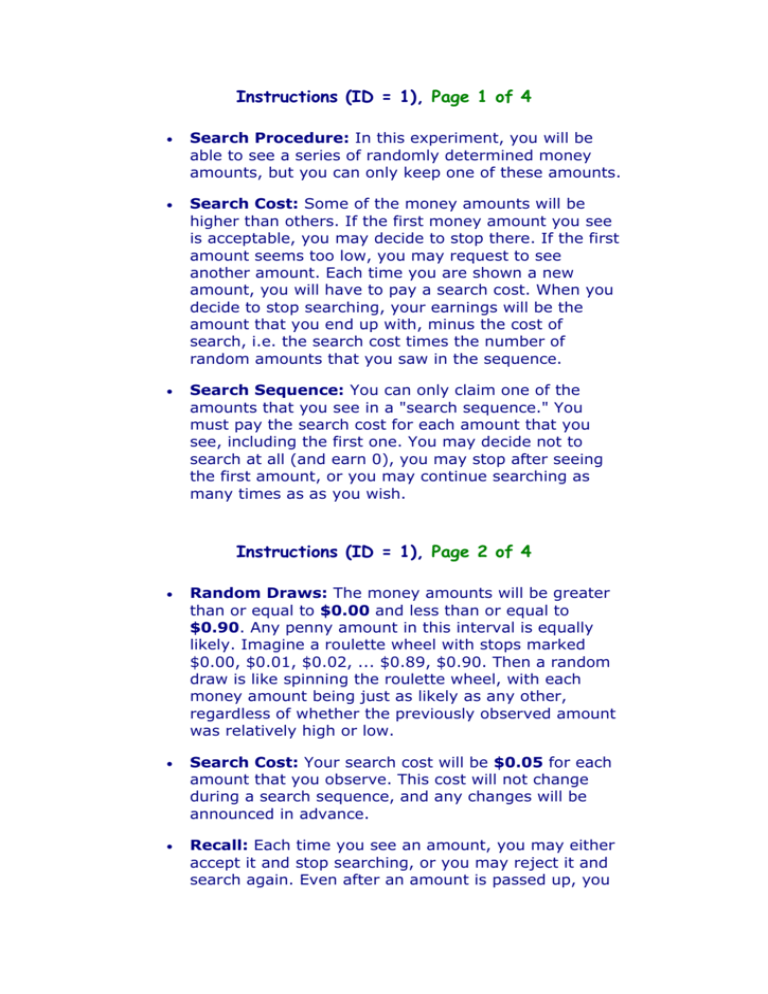
Instructions (ID = 1), Page 1 of 4 Search Procedure: In this experiment, you will be able to see a series of randomly determined money amounts, but you can only keep one of these amounts. Search Cost: Some of the money amounts will be higher than others. If the first money amount you see is acceptable, you may decide to stop there. If the first amount seems too low, you may request to see another amount. Each time you are shown a new amount, you will have to pay a search cost. When you decide to stop searching, your earnings will be the amount that you end up with, minus the cost of search, i.e. the search cost times the number of random amounts that you saw in the sequence. Search Sequence: You can only claim one of the amounts that you see in a "search sequence." You must pay the search cost for each amount that you see, including the first one. You may decide not to search at all (and earn 0), you may stop after seeing the first amount, or you may continue searching as many times as as you wish. Instructions (ID = 1), Page 2 of 4 Random Draws: The money amounts will be greater than or equal to $0.00 and less than or equal to $0.90. Any penny amount in this interval is equally likely. Imagine a roulette wheel with stops marked $0.00, $0.01, $0.02, ... $0.89, $0.90. Then a random draw is like spinning the roulette wheel, with each money amount being just as likely as any other, regardless of whether the previously observed amount was relatively high or low. Search Cost: Your search cost will be $0.05 for each amount that you observe. This cost will not change during a search sequence, and any changes will be announced in advance. Recall: Each time you see an amount, you may either accept it and stop searching, or you may reject it and search again. Even after an amount is passed up, you are permitted to go back later and claim that amount if you change your mind. Thus when you stop a search sequence, you will always end up accepting the highest of the amounts that you have encountered. Instructions (ID = 1), Page 3 of 4 Earnings: You begin the experiment with an amount of money, $6.00. There will be a number of search sequences, and each one offers a chance to add to your earnings. Gains and Losses: Earnings for a search sequence will be positive if the amount you accept is greater than the total search cost for that sequence, calculated as the number of amounts observed times the cost $0.05 per draw. Thus earnings may be positive or negative. Total Earnings The computer program starts you with $6.00, with gains being added and losses being subtracted. After each search sequence, your earnings for that sequence and your total earnings up to that point will be displayed. Instructions Summary (ID = 1) To summarize, there will be a number of search sequences. In each sequence, you will have the option to observe one or more randomly determined numbers or "draws." Each random draw will be an amount of money on the interval from $0.00 to $0.90. Each penny amount in this interval is equally likely. You will pay $0.05 to see the first draw (and any subsequent draw) in a search sequence. You may stop the sequence at any time and accept the highest amount observed thus far. There is no limit on the number of draws that you may take. You begin with an initial balance of $6.00. Positive earnings will be added and negative earnings will be subtracted.
